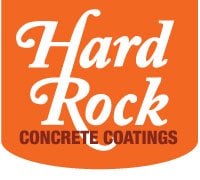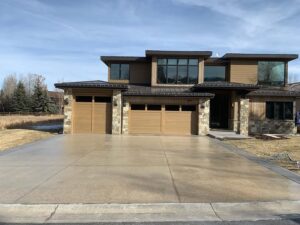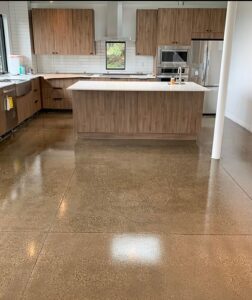Concrete is durable and can be used in a wide range of spaces. Cement flooring is useful for walkways, driveways, poolsides, decks, garages, indoor flooring, countertops, and much more. However, one downfall of everyday concrete that tends to limit the imaginations of many is the dull gray look of cement. An expertly applied acid stain can add a splash of color to any concrete surface, opening up a whole new world of concrete applications. Acid stains can be completed to match existing color schemes or as a centerpiece to build around. Below is the rough process Hard Rock Concrete Coatings experts use to create beautiful acid-stained concrete on flooring, walkways, countertops, and any other cement surface.
- If the concrete is indoors and surrounded by finish work, the trim and other finish work that touches the flooring that may be damaged by the stain needs to be removed.
- Similar to step 1, step 2 deals with preparing the area. Any surrounding walls around the concrete need to be removed. Acid stain is just that, staining created by acid. Even the best concrete experts like those at Hard Rock Concrete Coatings need to take precautions to avoid staining unintended surfaces like walls and adjacent flooring. Masking paper and painter’s tape are great tools to use in covering at-risk surfaces.
- Next, the acid stain is mixed. The acid stain is mixed in a well-ventilated area (preferably outdoors) because concentrated doses of the mixture can be toxic. The main ingredient in concrete acid stain is hydrochloric acid. You may remember from your high school chemistry class that hydrochloric acid is extremely corrosive. So, protective gear must be worn during the mixing and applying process. Once mixed a test is undertaken to ensure the quality of the mixture and flow of the applicator. NOTE: There must be no metal used in mixing or applying the acid stain. Hydrochloric acid is especially corrosive to metal.
- The next step is applying the acid stain mixture to the concrete. Hard Rock experts douse the concrete in a random pattern while avoiding the creation of puddles. The acid reacts with lime in the concrete so areas, where there is more lime, will create darker spots. The random spraying pattern and the different levels of lime deposits create a unique pattern. The process can be repeated every hour or so until the floor reaches the desired color.
- Once the proper color is reached the acid needs to be neutralized. A mixture of water and ammonia can be sprayed on the floor to achieve this neutralization. A clean sprayer must be used.
- After the concrete is completely dry from the neutralization process it is time to clean the surface. A clean mop is used and then any excess water is vacuumed up.
- Again, the cement is allowed to completely dry. The next step is to apply a concrete coating or sealant. Concrete coatings are a great way to protect your newly stained concrete and sealants also offer a good-looking finish to go with the stain.
- Remove protectant paper and tape. Reinstall trim and finish work.
- Enjoy a beautifully complete project
Check out the Hard Rock Concrete Coatings acid stain page to see more info on acid staining and a sample color chart. Contact us today and let’s create something beautiful and memorable together.



